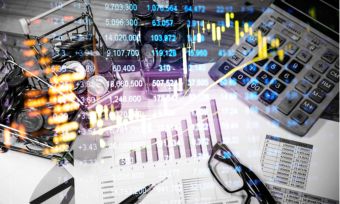Thinking of investing in ASX vs NASDAQ or NYSE? Before you jump in, there are a few differences that you need to be aware of. Here are the basics you need to know.
For many new Australian investors, the first step to building a portfolio is picking shares from the ASX, your local stock market. While supporting Aussie companies is a great starting point, some people may seek investment globally for greater growth opportunities. We all remember the skyrocketing Tesla share price or the GameStop rally in 2020/2021 – and there is no doubt that the U.S. markets are on top of the list to capture growth for many.
Looking to get started investing overseas but not sure where to start? Learn how to buy international shares in Australia.
Investing internationally is appealing to many Australian investors as many large companies are located in overseas markets. With technology readily at people’s fingertips, there are now minimal barriers stopping you from investing globally. We’ve gone back to basics so that you can have a holistic view of how much you could be paying when investing in ASX vs. International Exchanges like NASQAD & NYSE. Before you get started in opening a brokerage account and buying international shares, it’s important to consider the brokerage fees, currency conversion fees and account fees.
Brokerage fees
Most things products come with fees, and trading financial products are no different. A brokerage fee is charged by a broker every time you buy or sell, on the market. Some brokerage accounts only allow you to trade in a limited number of international markets, so it is worth investigating what markets your platform allows you to trade in. The brokerage fees for share trading internationally may be varied depending on the brokerage platform, and the market you are looking to trade in.
Currency Conversion fees
We all know buying things overseas incurs a cost, and the same principle applies to investing in international shares that are not priced in Australian dollars – you pay a small fee for the currency conversion.
Conversion fees can be charged differently. Some brokers charge the fee on every transaction – buy or sell. As an investor, it is better to only be charged once when moving AUD to USD, and trade from the USD in your account. As a general rule of thumb, the fewer fee-charging events, the more you save.
Currency fluctuation can be in investors’ favour when investing overseas. For example, consider if Sarah purchased Apple shares and chooses to sell when she thinks the time is right. It happens that at the time of sale, AUD is worth less than USD at the time of purchase. Then Sarah collects the difference, in both Apple’s share price and the increased value of the USD. Currency can have an impact on the tax considerations and growth of the sahre that you purchase at the time of sale.
Related article: How to Buy International Shares in Australia
Account fees
The common fees on investment accounts by different brokers can include:
- Management / Platform fee – This is a fee for the service of maintaining your account and is usually a static amount. Similar to the ‘annual fee’ on credit cards.
- Custody fee – It is the cost paid to a broker to hold an investor’s international assets. The custody fees are usually in the form of a percentage over assets under management.
- Inactivity fee – An inactivity fee is one that is charged by a broker to clients for not actively trading.
What you need to be aware of
Depending on your investment strategy, it is important to consider the fee structure when choosing your broker for international investing. Don’t look at only one aspect of the cost, try to take your own circumstances into account including how much would you invest and how often you would trade. Considering your time horizon and risk profile can be largely beneficial for your investments locally and overseas.
Cover image source: NataliyaBack/Shutterstock.com







Share this article